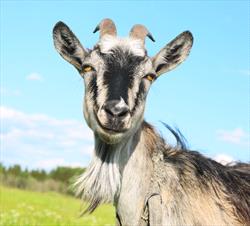Goat smiling

Photo by Depositphotos
Recently a case of brucellosis was diagnosed in a Texas man from drinking raw milk from a licensed raw milk dairy. Brucellosis is a bacterial disease of cattle that was very common in Texas 50 years ago but is now rarely found due to vaccination and testing. However, it is still in some areas and the bacteria is transmitted in the milk as well as fetal fluids at calving to other animals and people. There are also other diseases that can be carried in raw milk, which is the reason for pasteurization as this process kills the organisms. Raw milk is not pasteurized. Other animals commonly affected with brucellosis include sheep, goats, pigs and others. The disease can also cause fistulous withers that is a draining tract at the withers in horses and is a cause of infection of the vertebrae in dogs. In humans, symptoms include fever, sweats, decreased appetite, headache, pain in muscles and fatigue, or basically flu-like symptoms that do not respond to normal treatment. The condition is called undulant fever in humans because it can recur for long periods of time and can cause heart valve infection, swelling of the liver and spleen and abortion in pregnant women.
Brucellosis is a very serious disease in animals and people and drinking raw milk should be discouraged as the risks of developing disease are not worth taking the chance. Death rarely occurs with the disease but many people have recurring symptoms that can last a lifetime, which was common before antibiotics were discovered. Fortunately, today the disease responds to antibiotics in most humans. However, drinking raw milk or feeding it to your pets, just like feeding raw meat to your pets, is dangerous for you and your family and is not worth the risk.